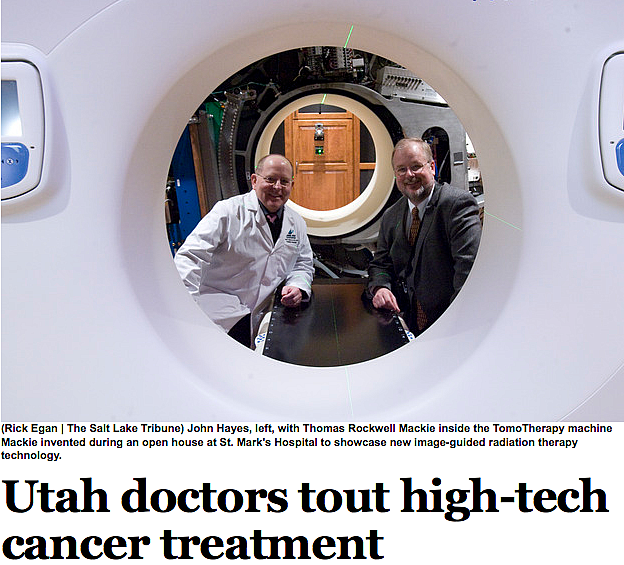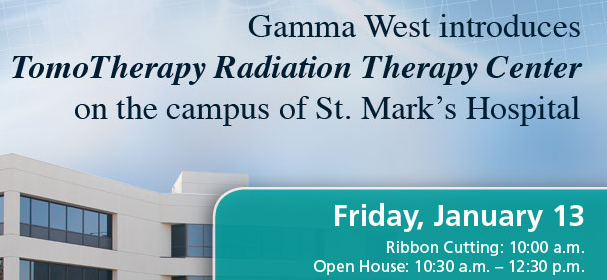A good example of avoiding cheerleading and exploring tough medical technology questions

 Kudos to reporter Kirsten Stewart of the Salt Lake Tribune for showing how to avoid local boosterism – so often seen when the local health care industry makes an announcement or holds a ribbon-cutting ceremony. In her story, "Utah doctors tout high-tech cancer treatment," she helps readers think critically. Rather than regurgitating ribbon-cutting rah-rah, she asked tough questions, sought independent perspectives and delivered a solid piece of journalism as a result. We need more like this on medical technology issues.
Kudos to reporter Kirsten Stewart of the Salt Lake Tribune for showing how to avoid local boosterism – so often seen when the local health care industry makes an announcement or holds a ribbon-cutting ceremony. In her story, "Utah doctors tout high-tech cancer treatment," she helps readers think critically. Rather than regurgitating ribbon-cutting rah-rah, she asked tough questions, sought independent perspectives and delivered a solid piece of journalism as a result. We need more like this on medical technology issues.
You should read the full story, but here are some excerpts:
An independent group of radiation oncologists affiliated with hospitals throughout Utah is hyping the arrival of "the world's most advanced radiation therapy."
Residents of Davis, Washington - and now Salt Lake - counties have ready access to Accuray Inc.'s TomoTherapy Hi-Art Treatment System, says a news announcement by physicians at Gamma West Cancer Services. The technology, showcased in full-page newspaper ads and at a Friday open house at St. Mark's Hospital, takes 360-degree CT scans of patients, allowing radiologists to better spot tumors, pinpoint therapy and minimize damage to healthy tissue.
Experts agree image-guided radiation therapy is fast becoming the standard of care, especially for hard-to-reach tumors. But it isn't new technology, nor is it new to the Salt Lake area. And whether the TomoTherapy brand is "a step above" other systems, as described by Gamma West's founder and chief medical officer, John K. Hayes, is open for debate.
The trick for patients, of course, is finding which treatments, if any, are right for them - a decision complicated by the soaring cost of cancer care in America.
From 1990 to 2008, spending on cancer grew to $90 billion from $27 billion, according to a 2009 study in the Journal of the American Medical Association. Authors tied the increase to new drugs, robotic surgeries, radiation techniques and an aging population.
The rise of high-tech medicine has coincided with a decrease in death rates from cancer. But scientists differ on whether it's directly responsible for prolonging lives.
"We are very medicalized in this country. We think that every predicament in life is a medical predicament and there's some miraculous solution," said Nortin Hadler, an immunologist and microbiologist at the University of North Carolina, Chapel Hill and author of Rethinking Aging and Worried Sick.
But about 80 percent of our increase in longevity is tied to our socioeconomic status - "something about the way we live together, whether that's job security or education levels," Hadler said.
Biomedical advances, on the other hand, are responsible for about 20 percent, which Hadler says he's proud of. But he rails against the overtreatment of patients by an industry that he says has "lost its moral compass."
The question on every patient's mind should be, will this treatment work? "I don't care if they have the latest proton thing out of science fiction or if my insurance company will cover it or how well they market it. I care how much it will help my patient who is ill."
Hype.
Medicalization.
Costs.
Informed patient decision-making.
She fit a lot into this story and deserves a shout-out for the effort.
Related Recent Posts:
"$430 Million Proton Beam Center War" - latest chapter playing out in San Diego.
Surgeon blogs that robotic surgery is all hype and no substance
Cyberknife for prostate cancer "still developing and can't stand on its feet"
